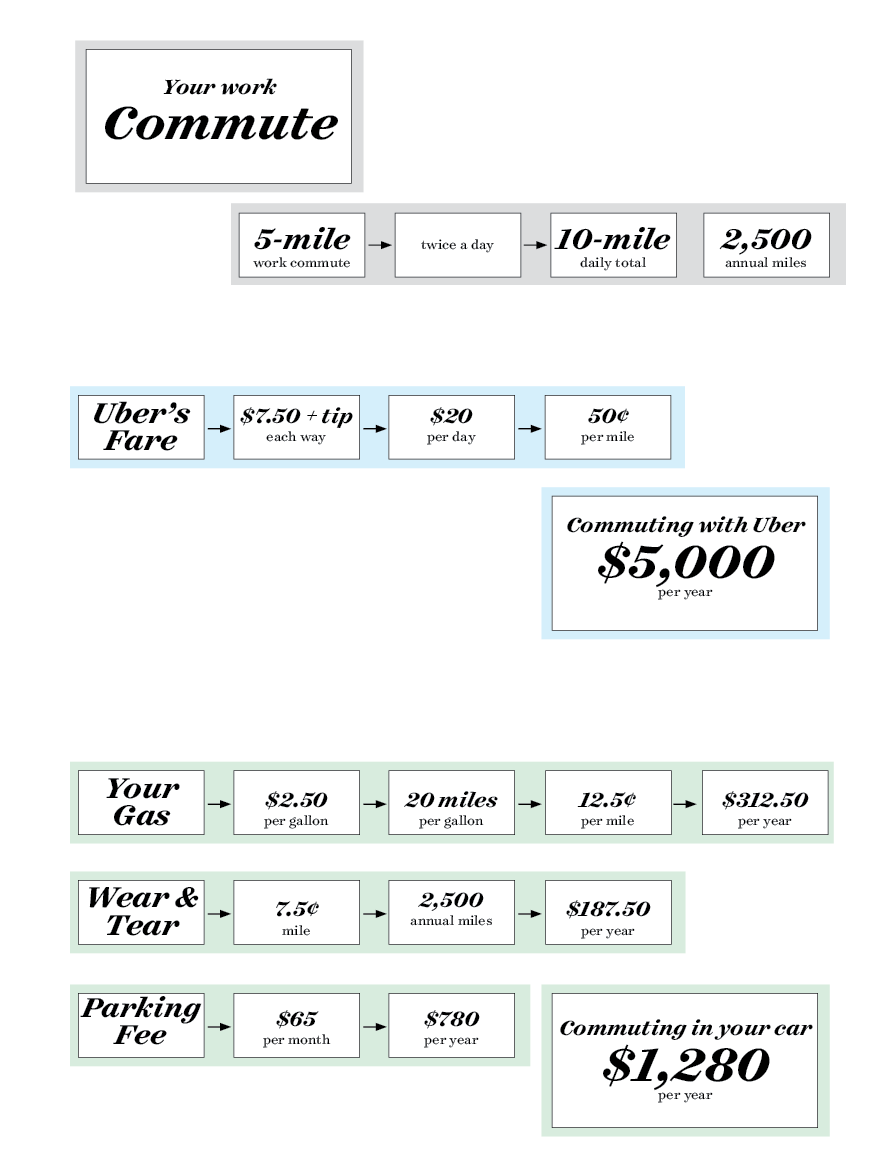Rideshare services like Uber or Lyft are most often seen as a substitute for a taxicab—a safe ride home after a night on the town or a session in the dentist’s chair, a lift to the airport so you can leave your car parked at home, backup transportation when the car’s in the shop. If you were to calculate the operating costs of your car, you’d know that this isn’t a bad option after all.
But could this perceived once-in-a-while service affordably handle your daily commute?
Let’s consider this hypothetical: You live within a giant bootlace’s length of Tulsa’s Golden Driller and have a five-mile commute to your 8-to-5 job at Fourth and Boston. You have a car for shopping, errands, and out-of-town trips, but you’d rather not use it for the daily grind. You like the idea of door-to-door transportation—no slogging through winter wind or summer swelter between your building and your monthly parking space. Someone else driving means you can enjoy a couple of pints at Fassler Hall and then head home with a clear conscience. Uber’s fare estimator says a five-mile UberX trip (the cheapest option) from the Driller’s boots to downtown will cost $7 to $10. Split the difference, add in a decent tip (you were going to tip the driver, weren’t you?), and it comes to $20 a day, or $5,000 for the year. Lyft’s estimate is comparable: $9 for the trip.
How does that compare to driving your own vehicle? Assuming $2.50 per gallon of gas, 20 miles per gallon, and 250 commuting days per year, your daily 10 miles round-trip costs you $312.50 in gas for the year. The US Department of Transportation estimates average tire and maintenance costs at 6.1 cents per mile for 2013; let’s assume some inflation and round it up to 7.5 cents. That comes to $187.50 for the year. Add in $65 a month for parking on a surface lot not too far from your building—another $780. The marginal annual cost for using your own car to commute: $1,280.00. We’re excluding the fixed costs of car ownership—tag, insurance, and depreciation.
Daily Uberage or Lyfting will be almost four times as expensive as driving your own car—a hefty hipster premium. Rideshare prices are about the same in Oklahoma City, which, like Tulsa, has both Lyft and Uber in the market. In nearby cities where Uber is unchallenged, a daily rideshare commute is an even worse deal: a five-mile ride is $10 – $13 in Little Rock, and $12 – $16 in Wichita. All three cities have monthly parking for comparable or cheaper rates than Tulsa.
Exorbitant downtown parking rates could make rideshare a better bargain, but higher fuel and maintenance costs are likely to mean proportionately higher fares for ridesharing.
An old-fashioned approach to ridesharing—the carpool—would offer almost all the benefits of a daily Uber or Lyft commute at a fraction of the price. A four-person carpool with the above scenario would bring the commuting cost down to $320 per person each year. The only drawback: You’d have to drive every few days, but you’re saving enough cash to justify the occasional rideshare home when you’ve abandoned your carpool to stay behind for happy hour.
What if you ditch the car completely in favor of using rideshare everywhere? That could save you around $6,000 a year in fixed costs, and another $2,500 in gas, tires, and maintenance (assuming 12,500 non-commuting miles), but you’d be paying Uber for all those miles: 2,500 five-mile UberX trips would run you another $25,000. Living in one of the rare Tulsa neighborhoods that has shopping, health care, and entertainment within walking distance could cut that cost substantially, but your housing costs would be higher.

Originally published in This Land: Winter 2016.
